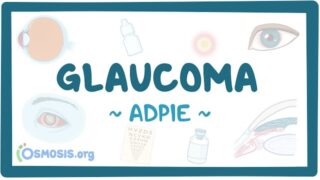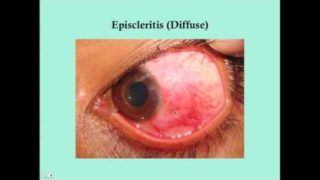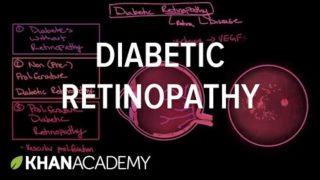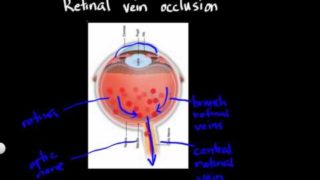What is Macular Degeneration?
Macular degeneration is a disease which affects the retina. In this video we will describe the symptoms of macular degeneration. The retina is the layer at the back of the eye which helps us to see the world around us.
Macular degeneration causes changes in central vision. Images which were once clear may appear blurred. Later, dark spots may appear and enlarge. Straight lines may become distorted or curved. Colors may appear less vivid or darker.
The eyes work together. When one eye loses vision, it may not be noticed because the other eye is still able to see. Each eye must be tested on its own to identify changes in vision.
The symptoms of macular degeneration may be found in other eye conditions. It is very important for an ophthalmologist to perform an examination to ensure that no other conditions are present.
Dry macular degeneration affects the health of the retina. The retina is the lining of the eye which responds to light. Here, a cross section of the retina can be seen. In the "dry" form of macular degeneration, metabolic end products collect underneath the retina. These deposits are called "drusen". Over time, Dry Macular Degeneration can lead to scarring or thinning of the retina above. Dry macular degeneration may cause gradual central vision loss over time. Every patient has a different course, and some patients preserve vision for a very long time. Your ophthalmologist will monitor your eyes. Ask about how stopping smoking or vitamin formulations can help to slow the progression of dry macular degeneration.
Wet macular degeneration may develop in patients with the "dry" form of macular degeneration. In the "wet" form, blood vessels that are leaky and abnormal begin to grow into the retina. Unlike normal blood vessels in the rest of the body, those seen in "wet" macular degeneration cause swelling or bleeding into the retina. Wet macular degeneration may cause either sudden or gradual loss of vision as these vessels leak fluid or bleed. If untreated, vision loss can progress.
The retina, which lines the back wall of the eye, is responsible for sight. In "dry" macular degeneration, deposits collect underneath the retina. In "wet" macular degeneration, abnormal blood vessels begin to sprout. A molecule known as a vascular endothelial growth factor, or "VEGF", is released in "wet" macular degeneration. VEGF binds to its receptors much like a key entering a lock. VEGF is a signal which causes leaky blood vessels to form underneath the retina. As these abnormal blood vessels leak and bleed, the retina becomes swollen and vision may decline.
The main treatment for "wet" macular degeneration is an injection of medication into the eye. This medication is delivered close to the retina after freezing and cleaning the eye, and most patients experience only minimal discomfort. These medications work by binding to the VEGF that is released, much like a sponge. As a result, the VEGF cannot bind to its receptors. These injections slow or stop the growth of abnormal vessels. As with any medical procedure, injections of anti-VEGF may help to preserve or slow the risk of vision loss from "wet" macular degeneration. Injections carry risks each time they are performed. They last only a certain time, and repeated injections may be necessary to preserve vision. Talk to your ophthalmologist about the benefits and risks of anti-VEGF medication to learn more.
What is Macular Degeneration?
Other Videos You Might Like:
Subscribe
Login
681 Comments
Newest




